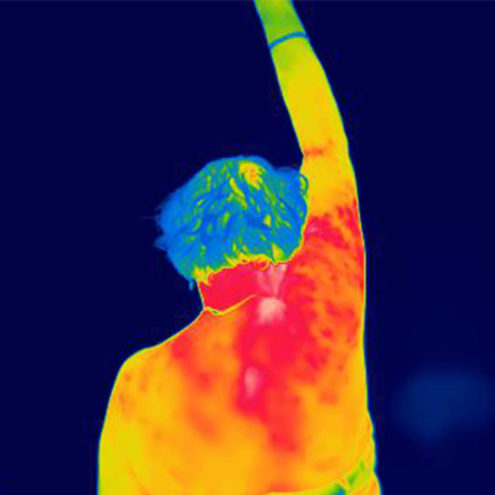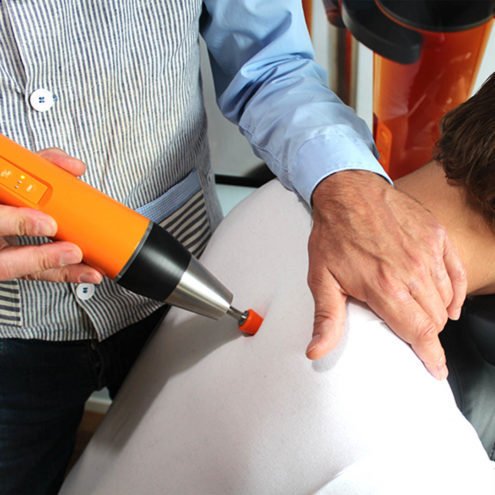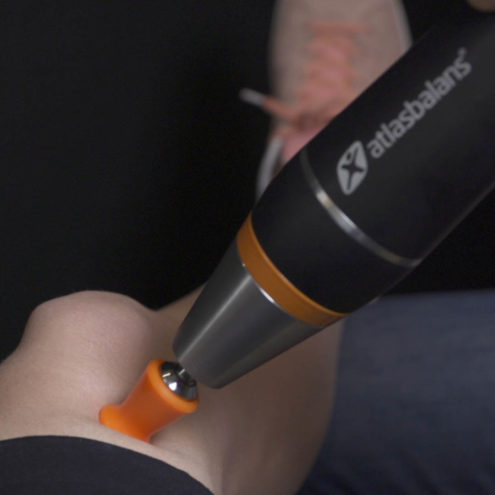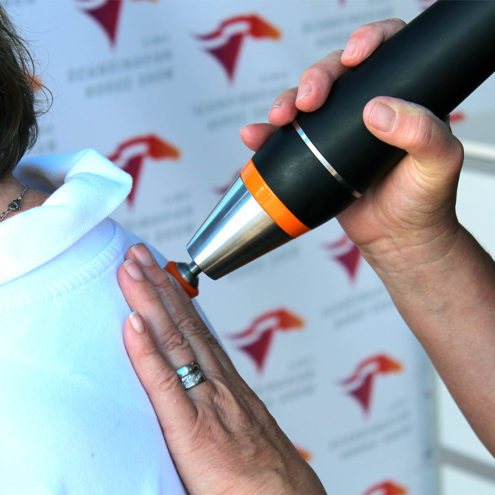Sciatica test

What is a sciatica test?
The sciatica test is a tool used by healthcare professionals to diagnose sciatica. The condition occurs when the sciatic nerve in the body becomes irritated or compressed. This irritation or compression can result in pain, numbness or weakness along the sciatic nerve. It is our largest nerve and extends from the lower back, seat and down to the back of each leg.
The purpose of a sciatica test
The purpose of a sciatica test is to determine whether the patient’s symptoms are caused by sciatica or whether there is a so-called“false sciatica”. The test can also help to identify the exact location of the nerve compression.
Common Test Methods
Common methods of testing for sciatica include physical examinations, such as the Straight Leg Raise (SLR), standing on tiptoe and walking on your heels. Imaging tests such as X-rays, magnetic resonance imaging (MRI) and computed tomography (CT) may also be used.
When should you carry out a sciatica test?
Symptoms suggestive of sciatica
Sciatica is characterized by pain radiating from the lower back down the back of the leg. The pain can be sharp or burning and may be aggravated by sitting, coughing or sneezing. Other symptoms may include weakness, numbness or tingling in the leg.
When to consult a doctor
If you experience any of the symptoms of sciatica, especially if the pain is severe or if it is accompanied by loss of bladder or bowel control, you should seek medical help immediately.
How is a sciatica test conducted?
Self-test for sciatica
Although it is always best to consult a healthcare professional if you suspect sciatica, there are some self-tests. A common self-test is the Straight Leg Raise (SLR), where you lie on your back and slowly lift the affected leg. If this causes pain along the back of the leg, it may indicate sciatica.
Doctor-controlled sciatica tests
During a physical examination, your doctor may perform a range of tests to determine if you have sciatica. These may include neurological tests to measure muscle strength, reflexes and pain, as well as specific sciatica tests such as the Straight Leg Raise.
Imaging tests (MRI, X-ray, etc.)
If your symptoms persist despite treatment, or if your doctor suspects a more serious condition, you may be referred for an MRI scan. These tests can provide detailed images of your spine and help identify any problems that may be causing sciatica, such as a herniated disc or spinal stenosis.
Interpreting the results of a sciatica test
What does your result mean?
If your test is positive, it means that your symptoms are probably caused by irritation or compression of the sciatic nerve. If the test is negative, something else may be causing your symptoms. Further testing may be necessary.
Next steps
If you are diagnosed with sciatica, your doctor will discuss the different treatment options available. These may include pain relief, physiotherapy and in some cases surgery.
Sciatica is managed slightly differently during pregnancy, read more about sciatica in pregnancy.
Sciatica test – what can I do myself?
Prevention
There are several steps you can take to prevent sciatica. These can be regular exercise, proper lifting techniques and maintaining a healthy weight.
Lifestyle changes
If you have been diagnosed with sciatica, certain lifestyle changes can help relieve your symptoms. These can include stretching and strengthening exercises, better posture, and taking regular breaks if you sit for long periods.
Sciatica test – frequently asked questions and answers
How reliable is a test for sciatica?
No test is 100% reliable. Physical examinations can provide valuable information, but imaging tests may be necessary to determine the exact cause of your symptoms.
What kind of doctor should I see for a sciatica test?
A general practitioner can often diagnose and treat sciatica. However, you may also be referred to a specialist such as a neurologist, orthopedist or physiotherapist.
What happens if I show signs of sciatica?
If you show signs of sciatica, you should contact a healthcare professional. Treatment can often help relieve the pain and prevent further damage to the sciatic nerve.
Can I prevent sciatica?
Although sciatica cannot always be prevented, some steps can be taken to minimize the risk. These include regular exercise, maintaining a healthy weight, and using proper lifting techniques.
 Search
Search


































